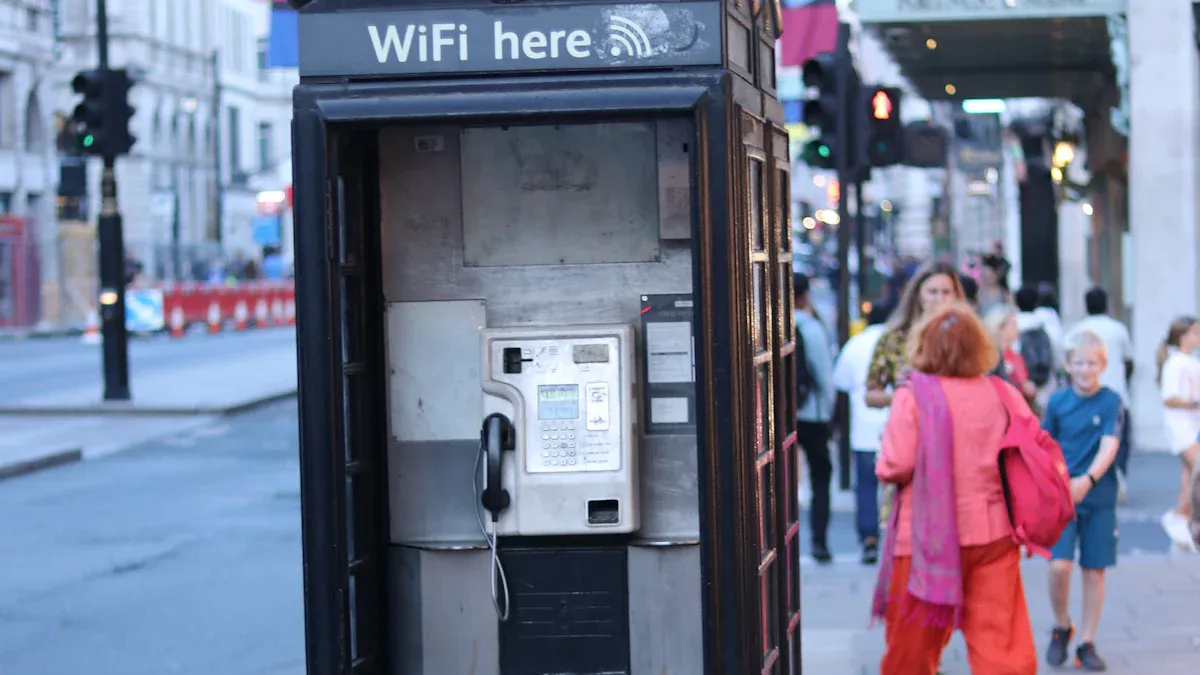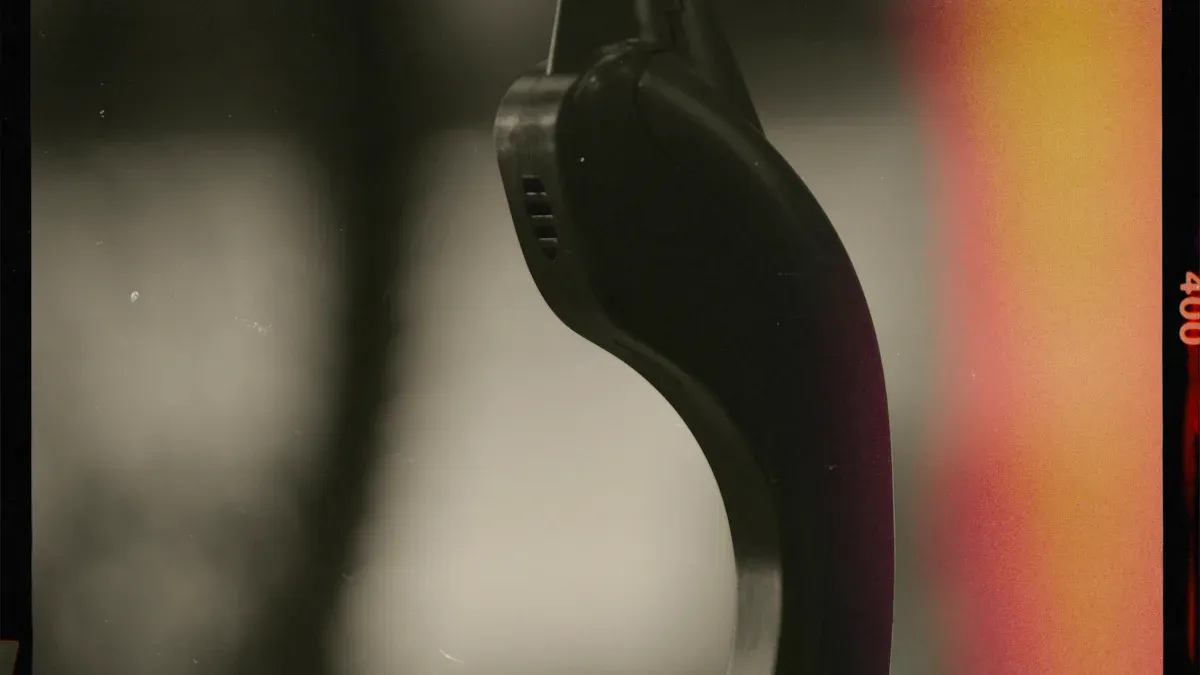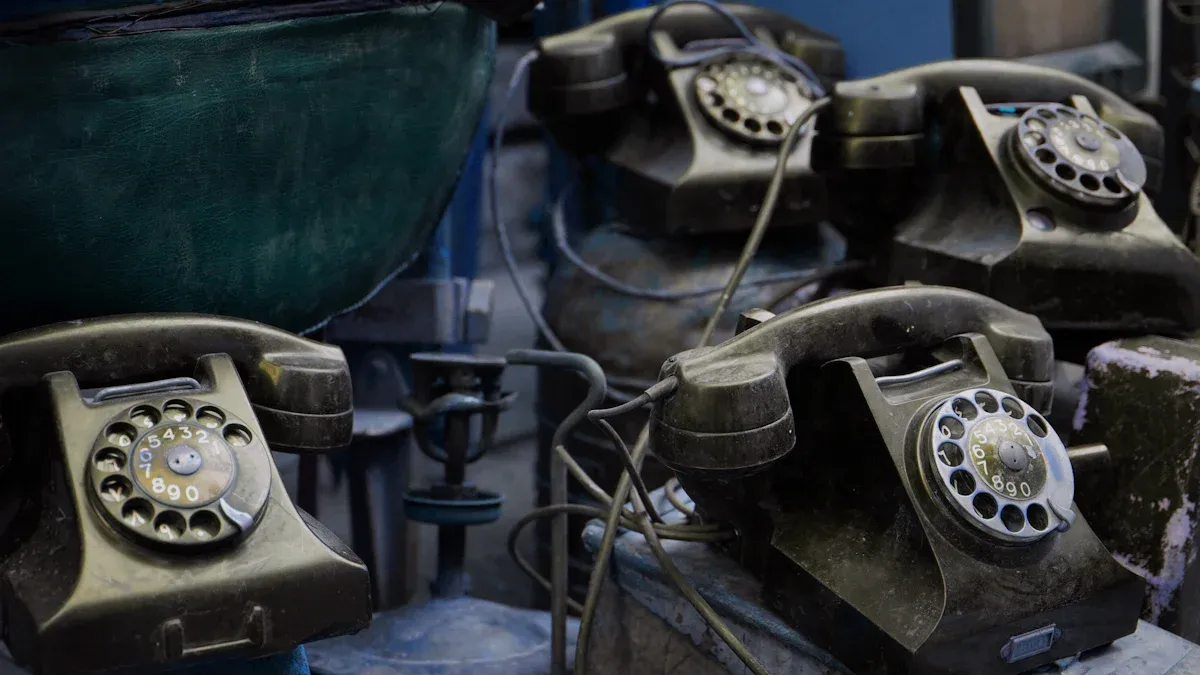
When you use a payphone, you control your call with the Public Telephone Hook Switch. This switch acts like a simple on/off button. You pick up the receiver to start your call. You hang up to end it. Understanding this helps you see why your call connects or disconnects.
Key Takeaways
- The Public Telephone Hook Switch controls your call by opening and closing an electrical circuit when you pick up or hang up the receiver.
- Older phones use mechanical switches with moving parts, while newer phones use sensor-based switches that last longer and work more reliably.
- Understanding the hook switch helps you use public phones confidently and know why your call starts and ends when you want.
How the Public Telephone Hook Switch Works

Picking Up and Hanging Up the Receiver
When you walk up to a payphone, you see the receiver resting on a cradle. This cradle holds the Public Telephone Hook Switch in place. You pick up the receiver, and the switch pops up. This action tells the phone that you want to make a call. The phone then connects you to the telephone network.
When you finish your call, you place the receiver back on the cradle. The hook switch goes down. This movement signals the phone to end your call. The phone disconnects you from the network. You control the start and end of every call with this simple motion.
Tipp: If you ever hear a dial tone after picking up the receiver, you know the hook switch is working!
What Happens Inside the Phone
Inside the payphone, the Public Telephone Hook Switch acts like a gatekeeper. When you lift the receiver, the switch closes an electrical circuit. This closed circuit allows electricity to flow. The phone then becomes active and ready for use.
When you hang up, the switch opens the circuit. The flow of electricity stops. The phone returns to its resting state. This process happens every time you use a public phone.
Here’s a simple table to show what happens:
| Aktion | Hook Switch Position | Circuit Status | Phone Status |
|---|---|---|---|
| Pick up receiver | Up | Closed | Ready to call |
| Hang up receiver | Down | Open | Call ended |
Everyday Examples
You use the Public Telephone Hook Switch every time you make a call from a payphone. For example:
- You pick up the receiver to call your friend. The phone gives you a dial tone.
- You finish your conversation and hang up. The call ends right away.
- If you forget to hang up, the phone stays connected. You might hear a beeping sound as a reminder.
Sometimes, you might see someone quickly tapping the receiver on the cradle. People do this to try to redial or signal the operator. The hook switch responds to each tap by opening and closing the circuit.
Note: The Public Telephone Hook Switch makes using public phones easy. You do not need to press any extra buttons to start or end your call.
Types of Public Telephone Hook Switches and User Benefits

Traditional Mechanical Hook Switches
You often find traditional mechanical hook switches in older public phones. These switches use moving parts, like springs and levers. When you lift the receiver, the parts move and close the circuit. When you hang up, the parts move back and open the circuit. This type of Public Telephone Hook Switch gives you a clear, physical feeling when you pick up or hang up the phone.
Tipp: If you hear a click when you pick up the receiver, you are using a mechanical hook switch.
Sensor-Based and Modern Alternatives
Many newer public phones use sensor-based hook switches. These switches do not use moving parts. Instead, they use sensors to detect when you pick up or hang up the receiver. Some phones use magnetic sensors, while others use light sensors. These modern designs make the Public Telephone Hook Switch more reliable because there are fewer parts that can wear out.
Here is a quick comparison:
| Type | How It Works | Hauptvorteil |
|---|---|---|
| Mechanisch | Moving parts | Clear feedback |
| Sensor-based | Uses sensors | Less wear, reliable |
Why These Changes Matter for Users
You benefit from these changes in several ways:
- Fewer breakdowns mean you can trust the phone to work.
- Modern switches respond faster, so your call starts right away.
- You do not need to worry about stuck or broken parts.
Remember, every Public Telephone Hook Switch aims to make your call easy and smooth.
You now know how the Public Telephone Hook Switch helps you control your calls. This small part makes public phones easy to use and reliable. When you understand how it works, you can use any public phone with confidence.
Remember: A working hook switch means your call starts and ends when you want.
FAQ
What should you do if the payphone does not give a dial tone?
Try picking up and hanging up the receiver again. If you still hear nothing, the hook switch or phone may not work. Use another phone.
Can you damage the hook switch by tapping the receiver quickly?
You usually will not break it by tapping a few times. Repeated hard taps can wear out mechanical parts over time.
Why does the phone beep after you hang up?
The phone beeps to remind you to hang up the receiver. This helps keep the line free for the next user.


